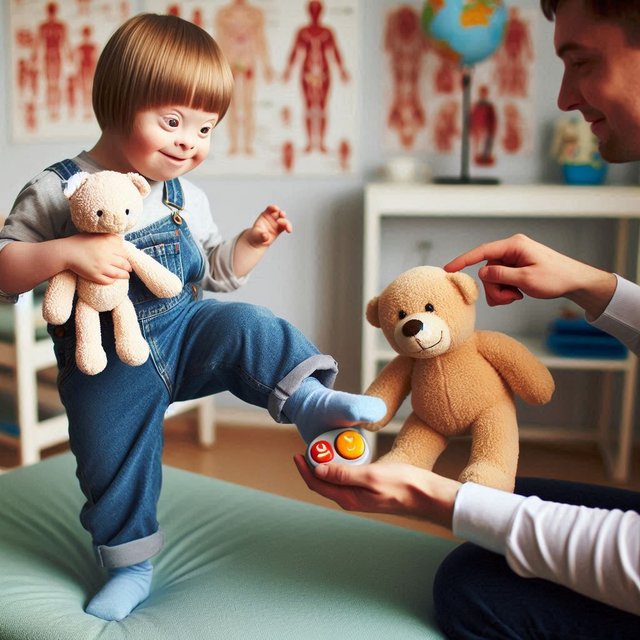Notifications

6 minutes, 56 seconds
-518 Views 0 Comments 0 Likes 0 Reviews

When working with young children who have limited understanding of cause and effect, finding ways to engage them in physical therapy can be a challenge. A particularly effective strategy involves using positive reinforcement, such as activating a switch-adapted toy, to motivate the child to perform specific therapeutic activities. Unilateral weight-bearing exercises, which are essential for building strength, coordination, and motor skills, can be made more fun and rewarding through this approach. Let’s dive into how this can work and why it’s so effective.
The Power of a Switch-Adapted Toy
For children with limited understanding of cause and effect, immediate rewards are a key motivator. A switch-adapted toy – a toy that activates with a simple press of a switch – can be a fantastic tool in encouraging children to perform certain actions, like unilateral weight-bearing exercises, correctly. These toys can be activated by a switch, allowing the child to see an instant outcome of their effort.
When the child performs the exercise (e.g., placing weight on one hand or leg), the therapist or caregiver can activate the toy by pressing the switch. This immediate cause-effect connection is critical for the child’s learning process. Over time, the child begins to associate the action (performing the exercise) with the reward (the toy’s activation), encouraging them to repeat the behavior.
While this article focuses on unilateral weight-bearing exercises, it’s important to note that this technique can be applied to a wide range of therapeutic activities. Whether the goal is to encourage crawling, stretching, or any other physical exercise, using a switch-adapted toy to reinforce the desired behavior is a versatile tool that can enhance many exercises and make them more engaging for children.
Choosing the Right Toy
When selecting a switch-adapted toy, it’s crucial to choose one that will truly engage the child. The toy should be something the child enjoys interacting with, as this will increase their motivation to participate in the activity. If the child is excited about the toy, they will be more likely to perform the exercise correctly in order to activate it. Whether it’s a toy that makes fun sounds, lights up, or moves, the key is to make sure it aligns with the child’s interests. This ensures that the reward is both motivating and enjoyable, making the therapy session feel more like play and less like work.
Why Timing is Everything
Timing is key when using this technique. The switch-adapted toy should only be made available to the child during the therapy session, and it should be activated only when the child performs the task correctly. If the toy is readily available outside of the therapeutic setting, the child may lose interest in working for it. They could quickly realize that they can access the toy without putting in any effort, which means the incentive to participate in the exercise becomes less motivating.
To ensure that the toy retains its value as a reward, caregivers and therapists should:
Final Thoughts
Incorporating a switch-adapted toy into unilateral weight-bearing exercises can be a game-changer for young children with limited cause-and-effect understanding. By making the toy an exclusive reward for performing the activity correctly, and ensuring the family is on board, the child will not only develop important motor skills but also learn valuable cognitive lessons. While this article focuses on unilateral weight-bearing, remember that this technique is adaptable to many other exercises, helping to engage the child in a wide variety of therapeutic tasks.
Choosing the right switch-adapted toy—one that truly engages the child and matches their interests—is crucial to the success of this approach. With the support of a dedicated family, this technique can significantly enhance the child’s therapeutic experience, making both the therapy and the progress much more enjoyable and rewarding. And, as a child's physical abilities strengthen and their understanding of cause-effect blooms, they can be the one who controls switch activated toys.
For more information about Disabled Call Button visit here Adaptive Tech Solutions
Assistive Technology Products Handicapped Assistive Devices Call Button

